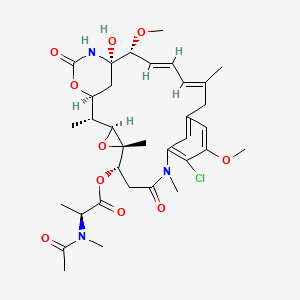| Adams SR et al. |
Anti-tubulin drugs conjugated to anti-ErbB antibodies selectively radiosensitize. |
2016 |
Nat Commun |
pmid:27698471
|
| Mahtani RL and Vogel CL |
When Can a Salvage Therapy (T-DM1) Take the Lead? |
2016 |
J. Clin. Oncol. |
pmid:27432926
|
| Li C et al. |
Ethnic sensitivity assessment of the antibody-drug conjugate trastuzumab emtansine (T-DM1) in patients with HER2-positive locally advanced or metastatic breast cancer. |
2016 |
Cancer Chemother. Pharmacol. |
pmid:27423671
|
| Chen L et al. |
In-depth structural characterization of Kadcyla® (ado-trastuzumab emtansine) and its biosimilar candidate. |
2016 |
MAbs |
pmid:27380163
|
| Géraud A et al. |
Preliminary results of the concurrent use of radiotherapy for bone metastases and trastuzumab emtansine in patients with HER2-positive metastatic breast cancer. |
2016 |
Cancer Radiother |
pmid:27342941
|
| Dzimitrowicz H et al. |
T-DM1 Activity in Metastatic Human Epidermal Growth Factor Receptor 2-Positive Breast Cancers That Received Prior Therapy With Trastuzumab and Pertuzumab. |
2016 |
J. Clin. Oncol. |
pmid:27298406
|
| Wang C et al. |
Chromatography-based methods for determining molar extinction coefficients of cytotoxic payload drugs and drug antibody ratios of antibody drug conjugates. |
2016 |
J Chromatogr A |
pmid:27286648
|
| Hamblett KJ et al. |
Altering Antibody-Drug Conjugate Binding to the Neonatal Fc Receptor Impacts Efficacy and Tolerability. |
2016 |
Mol. Pharm. |
pmid:27248573
|
| Ponte JF et al. |
Understanding How the Stability of the Thiol-Maleimide Linkage Impacts the Pharmacokinetics of Lysine-Linked Antibody-Maytansinoid Conjugates. |
2016 |
Bioconjug. Chem. |
pmid:27174129
|
| Fan Y et al. |
Effects of modulation of pentose-phosphate pathway on biosynthesis of ansamitocins in Actinosynnema pretiosum. |
2016 |
J. Biotechnol. |
pmid:27173582
|
| Zhang YG et al. |
Nocardiopsis ansamitocini sp. nov., a new producer of ansamitocin P-3 of the genus Nocardiopsis. |
2016 |
Int. J. Syst. Evol. Microbiol. |
pmid:26486850
|
| MartÃnez MT et al. |
Treatment of HER2 positive advanced breast cancer with T-DM1: A review of the literature. |
2016 |
Crit. Rev. Oncol. Hematol. |
pmid:26318092
|
| Ogitani Y et al. |
Bystander killing effect of DS-8201a, a novel anti-human epidermal growth factor receptor 2 antibody-drug conjugate, in tumors with human epidermal growth factor receptor 2 heterogeneity. |
2016 |
Cancer Sci. |
pmid:27166974
|
| Feng L et al. |
Biological evaluation of antibody-maytansinoid conjugates as a strategy of RON targeted drug delivery for treatment of non-small cell lung cancer. |
2016 |
J. Exp. Clin. Cancer Res. |
pmid:27102688
|
|
T-DM1 Combo Graduates from I-SPY 2. |
2016 |
Cancer Discov |
pmid:27095360
|
| Singh AP et al. |
Evolution of Antibody-Drug Conjugate Tumor Disposition Model to Predict Preclinical Tumor Pharmacokinetics of Trastuzumab-Emtansine (T-DM1). |
2016 |
AAPS J |
pmid:27029797
|
| Shen K et al. |
Safety and Efficacy of Trastuzumab Emtansine in Advanced Human Epidermal Growth Factor Receptor 2-Positive Breast Cancer: a Meta-analysis. |
2016 |
Sci Rep |
pmid:26979925
|
| Krop IE et al. |
Phase 1b/2a study of trastuzumab emtansine (T-DM1), paclitaxel, and pertuzumab in HER2-positive metastatic breast cancer. |
2016 |
Breast Cancer Res. |
pmid:26979312
|
| de Goeij BE and Lambert JM |
New developments for antibody-drug conjugate-based therapeutic approaches. |
2016 |
Curr. Opin. Immunol. |
pmid:26963132
|
| Maass KF et al. |
Determination of Cellular Processing Rates for a Trastuzumab-Maytansinoid Antibody-Drug Conjugate (ADC) Highlights Key Parameters for ADC Design. |
2016 |
AAPS J |
pmid:26912181
|
